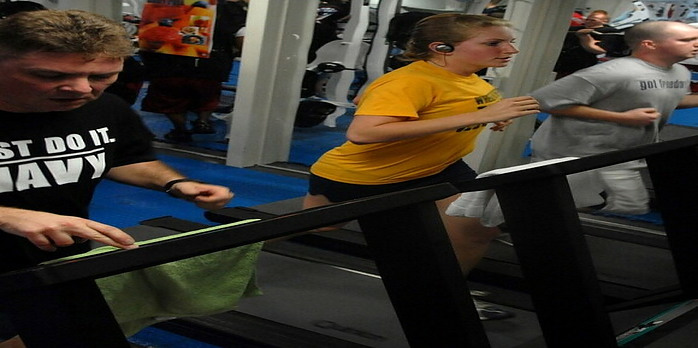Belly fat is more than an annoying jiggle. It represents two types of fat: Visceral and Subcutaneous. Visceral is deep-seated, wrapping around your organs, while subcutaneous lounges just under the skin. Not just a vanity issue, belly fat has a darker side – it’s associated with an array of health risks such as cardiovascular disease, type 2 diabetes, and certain cancers.
The diet I’m about to introduce to you isn’t merely a quick fix; it’s a method grounded in nutritional science that specifically targets belly fat. It’s built on the knowledge that no one type of food or magic bullet melts belly fat overnight. Instead, it focuses on patterns of eating that, combined with lifestyle changes, help whittle your middle.
As we embark on this nutritional journey together, understand that carving through the misconceptions of rapid fat loss is crucial. Many diets promise immediate results, but are they sustainable, or do they leave you in a worse-off rebound? Quality of calories, eating frequency, and even the timing of your meals all play pivotal roles.
 Dietary Strategies for Faster Belly Fat Loss
Dietary Strategies for Faster Belly Fat Loss
Tackling belly fat isn’t solely about eating less; it’s about eating smart. The right balance of macronutrients—proteins, fats, and carbohydrates—can be a game-changer. Protein, for example, can help keep you feeling full and supports muscle maintenance. A focus on healthy fats, like those from avocados and nuts, and complex carbs, like whole grains, can prevent spikes in blood sugar that lead to increased fat storage.
Creating a moderate calorie deficit is the next key step. Rather than slashing calories drastically, a sensible reduction that allows for steady fat loss while preserving muscle is vital. Cutting out too many calories can have the opposite effect, slowing your metabolism and making it harder to lose fat.
Some find success with intermittent fasting—cycling between periods of eating and not eating. This approach can simplify caloric reduction and may improve insulin sensitivity, which plays a role in fat storage.
Fiber is another big player. Foods rich in fiber, like vegetables, fruits, and legumes, can help you stay satiated. Moreover, a hydrated body functions better, so ensuring you drink plenty of water throughout the day can aid in reducing belly fat by helping to minimize cravings and support metabolism.
 Ultimately, incorporating these dietary strategies creates a solid foundation for burning belly fat. Combine this with the insights in the following section on physical activity, and you’ve got a powerful one-two punch for shedding unwanted weight.
Ultimately, incorporating these dietary strategies creates a solid foundation for burning belly fat. Combine this with the insights in the following section on physical activity, and you’ve got a powerful one-two punch for shedding unwanted weight.
The Role of Physical Activity: Complementing Your Diet
Integrating a smart exercise regimen is vital in the battle against belly fat. It’s not just about what you eat but also how you move. You see, when your body regularly engages in physical activity, it burns more calories, which is essential for creating the calorie deficit needed to lose fat.
Cardio exercises like running, swimming, and cycling can significantly boost your calorie burning. High-intensity interval training (HIIT), in particular, can be highly effective because it alternates between high bursts of activity and rest, maximizing fat loss.
Strength training should be a key player in your fitness strategy too. It’s not just to build muscle; by increasing your muscle mass, your body burns more calories even at rest. More muscle means a higher resting metabolic rate, which can help in losing belly fat faster.
 Committing to regular movement is crucial, even beyond structured workouts. Consider walking more, taking the stairs, and finding hobbies that keep your body in motion. These might seem like small steps, but they add up and keep your metabolism engaged.
Committing to regular movement is crucial, even beyond structured workouts. Consider walking more, taking the stairs, and finding hobbies that keep your body in motion. These might seem like small steps, but they add up and keep your metabolism engaged.
Remember, consistency is king in physical activity. Integrate exercise into your routine in a way that it becomes a non-negotiable part of your day. Whether it’s a morning run, a lunchtime walk, or an evening gym session, find times that work for you and stick to them.
Avoiding Common Pitfalls in Pursuit of Rapid Fat Loss
Many have traveled down the road of dieting with high hopes, only to stumble over pitfalls that hinder their progress. I want to address these common mistakes so you can steer clear of them.
The allure of a ‘quick-fix’ diet can be tempting. However, they’re often based on deprivation. The problem with these diets is that they’re not sustainable, leading many to revert to old habits and regain the weight.
Here’s a truth that deserves stressing: extreme calorie restriction might offer immediate results, but it’s simply harmful in the long run. Your body requires a certain energy intake to function properly ” ” cut too much, and you invite a host of issues from low energy levels to nutrient deficiencies.
When it comes to managing your social life while dieting, remember the power of moderation. Social events and dining out are part of life, so learning to make smart, balanced choices in these settings is crucial.
 Don’t underestimate the impact of stress on your dieting journey. Emotional eating is a well-worn response to stress for many, which usually leads to consuming high-calorie, low-nutrition foods. Instead, find healthier ways to cope, like physical activity, meditation, or engaging in hobbies.
Don’t underestimate the impact of stress on your dieting journey. Emotional eating is a well-worn response to stress for many, which usually leads to consuming high-calorie, low-nutrition foods. Instead, find healthier ways to cope, like physical activity, meditation, or engaging in hobbies.
What comes next? Sustaining your results over time. That’s right, maintaining your newly found healthier weight is about shaping a lifestyle that supports it.
Sustaining Results: Adopting a Lifestyle for Life-long Health
You’ve made impressive strides in removing unwanted belly fat, but the journey doesn’t end with reaching your goal weight. It’s about embracing a lifestyle that promotes health and well-being long-term. Let me share some vital steps to ensure your results last.
Remember, it’s not just about what you eat or how often you exercise. Adequate sleep is a pillar of weight maintenance. Aim for seven to nine hours per night to regulate hormones that control appetite.
Building a support system is also crucial. Surround yourself with people who encourage your healthy choices. Whether it’s family, friends, or an online community, having others to share your experiences with makes the process enjoyable and sustainable.
Routine health checks and monitoring your progress are essential. They not only keep you on track but also provide early detection of potential issues. We often focus solely on the scale, but remember to celebrate non-scale victories like improved energy levels or a better fit in your clothes.
Finally, HAVE PATIENCE and be kind to yourself. It took time to gain the weight; it will take time to lose it and even more time to master maintaining it. Adjust your lifestyle gradually—these changes don’t have to be monumental to have a lasting impact.
Thank you for reading this article. Your comments and questions are very valuable to me. Kindly drop them below in the comments section. Until I come your way again, Stay Healthy, and Remain Blessed. Shalom.

Hey there Tinuke,
I just read your article on combating belly fat and I have to say, it’s a comprehensive and eye-opening read. The way you’ve broken down the different types of fat and their health implications really puts into perspective the importance of tackling belly fat, not just for aesthetic reasons but for overall health.
The dietary strategies you’ve outlined resonate with me, particularly the emphasis on eating smart, not less. The balance of macronutrients and the focus on foods that help manage blood sugar and keep you satiated is something I’ve always believed in but often struggled to implement consistently. Your guide has reignited my commitment to making smarter food choices.
I also appreciate the realistic approach to exercise you advocate. The combination of cardio, HIIT, and strength training makes so much sense. It’s not just about one type of workout but a holistic approach to physical activity.
Your point about the pitfalls of quick-fix diets and the importance of a sustainable lifestyle is spot on. It’s easy to get caught up in the promise of rapid results, but as you’ve rightly pointed out, the key is a lifestyle change that can be maintained in the long term.
Reading this article has not only refreshed my understanding but also inspired me to take more active steps in managing my health. I used to be more diligent about my fitness routine, but over time, I’ve let it slip. Your article serves as a much-needed nudge to get back on track.
Thanks for sharing such an insightful and practical guide. It’s articles like this that make the journey to better health seem more achievable and less daunting.
Warm regards,
Danny
Hey Danny. I’m so delighted you gain one thing or the other that is of benefit to your wellness from this article. Thanks for the detailed comment, highly appreciated. A sustainable and consistent lifestyle is the key to a healthy living. I appreciate your time and enjoy reading your comments. Stay healthy and remain blessed.
Regards
Tinuke
I’m curious, among the dietary strategies you’ve outlined, which one have you personally found most effective or witnessed great success with? Also, any tips on overcoming emotional eating? It’s a common challenge. Lastly, what inspired you to focus on the long-term lifestyle aspect rather than quick fixes? Looking forward to your insights!
Hey Stratos, thanks for reading my article. The most sustainable strategy that gives a long-lasting result is embracing a lifestyle that can be maintained. A quick-fix method without a sustainable lifestyle has always proved to be a temporary solution. In most cases, such an individual will eventually go back to the initial habit and gain more weight than ever before.
For emotional eating, one needs to first discover what is stressing you out and avoid it as much as possible. Engage yourself in healthier activities or hobbies instead.
I hope this helps. Thanks again and stay healthy.